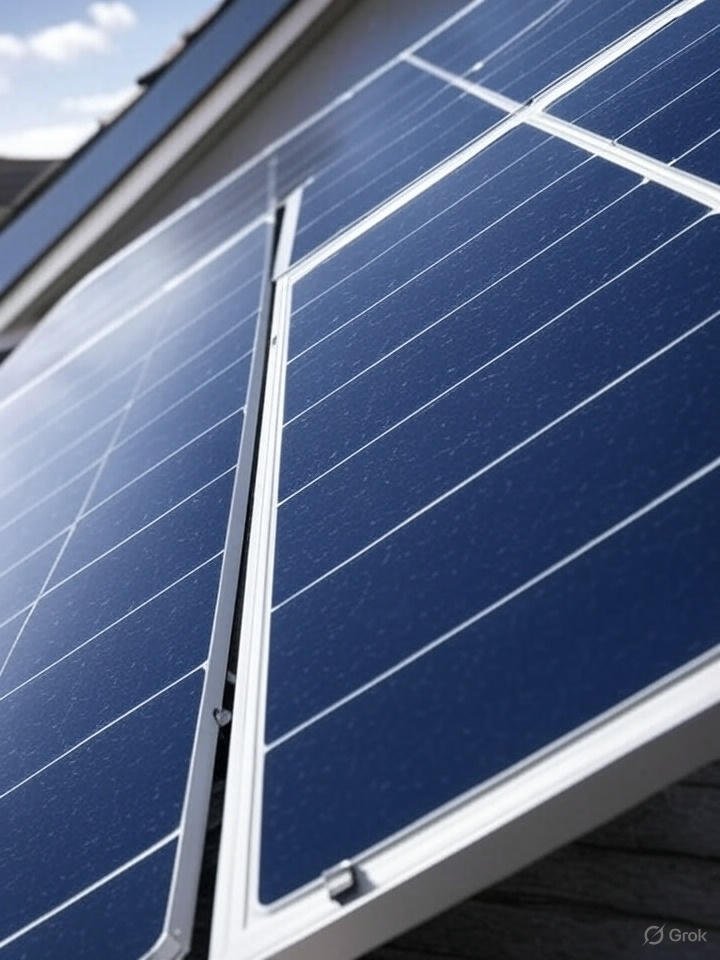Solar Power for Electricity
solar system and electricityThe solar system is our cosmic neighborhood, a dynamic collection of celestial bodies orbiting the Sun, a medium-sized star located at the center. It includes eight planets—Mercury, Venus, Earth, Mars, Jupiter, Saturn, Uranus, and Neptune—along with their moons, dwarf planets like Pluto, asteroids,
comets, and vast amounts of dust and gas. Formed about 4.6 billion years ago from a collapsing cloud of gas and dust, the solar system is held together by the Sun’s immense gravitational pull. Each planet has unique characteristics, from the rocky terrains of the inner planets to the gas giants and icy worlds of the outer reaches, making the solar system a fascinating subject of study for understanding the origins and diversity of cosmic environments.
Electricity, a fundamental force of modern life, is the flow of electric charge, typically carried by electrons through conductive materials like wires. It powers everything from household appliances to industrial machinery, driven by the movement of charged particles in response to electric fields. Generated through various means—such as solar, wind, hydro, or fossil fuel power plants—electricity is harnessed and distributed via complex grids to meet global energy demands. Its discovery and development, from pioneers like Michael Faraday to modern innovations, have transformed society, enabling technologies that drive communication, transportation, and industry, while ongoing research seeks to make electricity production more sustainable and efficient.
Also Read:creating viral cat videos
SunCell Panels: High-Efficiency Power
Solahart’s SunCell panels use N-type TopCon monocrystalline cells, achieving up to 22.5% efficiency for reliable energy output. With a 25-year product warranty and 30-year performance guarantee, they’re built to withstand Australia’s climate, delivering consistent power even in low-light conditions. Solahart
Silhouette Panels: Sleek, High-Yield Design
Silhouette panels offer 22% efficiency with bifacial PERC technology, capturing sunlight from both sides for maximum energy. Their 30-year warranty and dual-glass construction ensure durability and safety. Solahart
Sourced for Quality: Trusted Manufacturing
Solahart partners with top Chinese manufacturers, rebadging panels as SunCell and Silhouette to meet strict quality standards. Rigorous testing ensures reliability, backed by Solahart’s trusted local support. Solahart
Performance in Harsh Climates
SunCell and Silhouette panels excel in Australia’s heat and low light, with advanced tech for higher yields. Users report 5% above-expected energy production, even under clouds. Solahart
Long-Lasting Warranties
SunCell’s 25-year and Silhouette’s 30-year warranties, plus 30-year performance guarantees, offer peace of mind. Solahart’s nationwide service ensures quick maintenance and support. Solahart
Seamless System Integration
These panels pair with Solahart’s inverters and PowerStore systems, optimizing energy use with solutions like Tesla Powerwall for cost-saving home energy. Solahart
How a Solar Electric System Works
A solar electric system, also known as a photovoltaic (PV) system, converts sunlight into electricity through a series of interconnected components. The process begins with solar panels, which are made up of photovoltaic cells containing materials like silicon. When sunlight hits these cells, it excites electrons, creating an electric current. This direct current (DC) is then sent to an inverter, which converts it into alternating current (AC),
the type of electricity used by most household appliances and the power grid. The system may also include a charge controller to regulate the flow of electricity, especially in systems with battery storage, to prevent overcharging. Batteries store excess energy generated during peak sunlight hours for use at night or during cloudy periods. The electricity is then distributed through a meter to power homes or businesses, and in grid-tied systems, any surplus can be fed back into the utility grid, often earning credits. This clean, renewable energy system reduces reliance on fossil fuels and lowers electricity costs over time.
What Are Solar Electric Panels
Solar electric panels, also known as photovoltaic (PV) panels, are devices that convert sunlight directly into electricity using the photovoltaic effect. Composed of numerous solar cells, typically made from silicon, these panels generate electric current when sunlight excites electrons within the cells. Each cell produces a small amount of direct current (DC), which is combined across the panel and converted to alternating current (AC) via an inverter for use in homes, businesses, or the power grid. Solar panels are a cornerstone of renewable energy systems, offering a clean, sustainable way to generate electricity while reducing reliance on fossil fuels.
Solar System for Electricity at Home
A solar system for home electricity, typically a photovoltaic (PV) system, harnesses sunlight to power household appliances and lighting, offering a sustainable and cost-effective alternative to traditional grid electricity. Solar panels, installed on rooftops or open spaces, capture sunlight and convert it into direct current (DC) electricity through photovoltaic cells. An inverter then transforms this DC into alternating current (AC), compatible with home appliances. Excess energy can be stored in batteries for use during low sunlight periods or fed back into the grid for credits in grid-tied systems. This setup reduces electricity bills, lowers carbon footprints, and provides energy independence, with components like charge controllers and meters ensuring efficient energy management.
Solar Charger
A solar charger is a portable device that uses photovoltaic panels to convert sunlight into electricity, enabling the charging of electronic devices like smartphones, tablets, or batteries. Typically compact and lightweight, these chargers contain small solar cells that generate direct current (DC) when exposed to sunlight, which is then regulated by an integrated controller to deliver the appropriate voltage and current for charging. Ideal for outdoor activities, emergencies, or off-grid scenarios, solar chargers offer an eco-friendly way to power devices, though their efficiency depends on sunlight availability and the quality of the panels.
Solar System in Electrical Engineering
In electrical engineering, a solar system refers to a photovoltaic (PV) system designed to generate electricity from sunlight for residential, commercial, or industrial use. It comprises solar panels with photovoltaic cells that convert solar energy into direct current (DC) electricity, which is then processed by an inverter to produce alternating current (AC) suitable for powering electrical loads or feeding into the grid. Key components include charge controllers to manage battery storage, wiring, and monitoring systems to ensure optimal performance. Engineers design these systems to maximize efficiency, considering factors like panel orientation, load requirements, and grid integration, contributing to sustainable energy solutions and reducing reliance on fossil fuels.
Solar Electric System Installer and Service Provider
A solar electric system installer and service provider specializes in designing, installing, and maintaining photovoltaic (PV) systems that convert sunlight into electricity for homes and businesses. These professionals assess a property’s energy needs, roof suitability, and sunlight exposure to customize a system, typically including solar panels, inverters, and optional battery storage. They handle permitting,
grid connection, and compliance with local regulations, ensuring safe and efficient installation. Reputable providers, like Sunrun or Freedom Solar, offer end-to-end services, from free consultations to post-installation monitoring, often backed by warranties of 25-30 years, and may assist with incentives like the federal solar tax credit to reduce costs. Choosing an accredited installer, such as those certified by Solar Accreditation Australia or MCS in the UK, ensures quality and reliability.
Solar Panels Used by Solahart
Solahart, a leading Australian solar energy provider since 1953, uses high-quality photovoltaic (PV) panels designed to meet strict performance and durability standards for Australia’s harsh climate. The company does not manufacture its own panels but sources them from reputable Chinese manufacturers, rebadging them under the Solahart brand with models like the SunCell and Silhouette. These panels are backed by Solahart’s comprehensive warranties and local support, ensuring reliability and customer confidence. Below are key details about the solar panels Solahart employs, based on available information.
SunCell Panels
Solahart’s SunCell panels are a premium offering, featuring high-efficiency N-type TopCon monocrystalline cells designed for excellent performance in various conditions. They achieve an efficiency of up to 22.5% and come with a 25-year product warranty and a 30-year performance guarantee, ensuring long-term reliability. These panels are rigorously tested, including flash tests and Electroluminescence (EL) imaging, to meet Solahart’s quality standards and deliver consistent power output, even in low-light or high-heat environments.
Silhouette Panels
The Silhouette panels are Solahart’s top-tier, platinum-grade offering, boasting a sleek all-black aesthetic and advanced bifacial technology that captures sunlight from both sides for enhanced energy production. With an efficiency of up to 22% and a 30-year Australian warranty, these 440-watt panels feature dual-glass construction for improved fire safety and durability. Their superior low-light and high-heat performance, enabled by PERC (Passivated Emitter and Rear Cell) technology, ensures higher yields, making them ideal for Australian homes.
Sourcing and Rebadging
Solahart sources its panels from trusted Chinese manufacturers, rebadging them as SunCell and Silhouette to align with the company’s quality specifications. This practice, while common, means Solahart is solely responsible for warranty claims, as the original manufacturers cannot be approached directly. Despite this, Solahart’s rigorous quality control, including inward goods inspections and performance testing, ensures that these panels meet high standards, offering reliability backed by a company with over 70 years of experience.
Performance and Efficiency
Both SunCell and Silhouette panels are designed for optimal performance in Australia’s diverse climate, with efficiencies of 22.5% and 22%, respectively. They utilize advanced cell technologies like N-type TopCon and PERC, which enhance energy production in low-light conditions and on hot days. User reviews highlight that Silhouette panels, for instance, generate 5% more energy than expected, even under fog, cloud, or partial shading, showcasing their robustness and efficiency.
Warranty and Support
Solahart offers robust warranties, with SunCell panels carrying a 25-year product warranty and Silhouette panels a 30-year product warranty, alongside 30-year performance guarantees for both. These warranties are supported by Solahart’s extensive Australian network, ensuring local service and maintenance. As a New Energy Tech Approved Seller, Solahart commits to consumer protection standards, providing peace of mind for customers investing in their solar systems
Integration with Solahart Systems
Solahart’s panels are designed to integrate seamlessly with their broader energy solutions, including world-class inverters from brands like SolarEdge, Enphase, and GoodWe, and battery storage options like Tesla Powerwall. The panels work efficiently with systems like Solahart PowerStore, a solar-smart water heater that uses excess
Silhouette Panels: Sleek, High-Yield Design
Silhouette panels feature 22% efficiency and bifacial PERC technology, capturing sunlight from both sides. With a 30-year warranty and dual-glass design, they ensure durability and safety for maximum energy savings. Solahart
Sourced for Quality: Trusted Manufacturing
Solahart sources panels from top Chinese manufacturers, rebadged as SunCell and Silhouette to meet strict quality standards. Rigorous testing and local support ensure long-lasting performance for your home. Solahart
Performance in Harsh Climates
Designed for Australia’s heat and clouds, SunCell and Silhouette panels produce up to 5% more energy than expected. Advanced tech ensures high yields in tough conditions for consistent power. Solahart
Long-Lasting Warranties
SunCell offers a 25-year warranty, while Silhouette provides a 30-year warranty, both with 30-year performance guarantees. Solahart’s nationwide service ensures quick, reliable support for your solar system. Solahart
Seamless System Integration
Solahart’s panels work with top inverters and PowerStore systems, like Tesla Powerwall, to optimize home energy use. Save more with integrated, efficient solar solutions tailored to your needs. Solahart
Frequently Asked Questions About Solahart Solar Panels
Below is a comprehensive list of frequently asked questions about Solahart solar panels, covering their types, performance, installation, maintenance, warranties, and more. These answers are based on Solahart’s reputation as a trusted Australian solar provider since 1953 and available information from their website, customer reviews, and industry insights.
What types of solar panels does Solahart offer?
Solahart provides two primary solar panel models: SunCell and Silhouette. SunCell panels feature N-type TopCon monocrystalline cells with up to 22.5% efficiency, a black frame, and a white backsheet, designed for reliable performance. Silhouette panels, the premium option, use bifacial PERC technology with 22% efficiency, an all-black dual-glass design for aesthetics and durability, and enhanced energy capture from both sides. Both are sourced from reputable Chinese manufacturers and rebadged to meet Solahart’s high-quality standards.
How efficient are Solahart solar panels?
Solahart’s SunCell panels achieve up to 22.5% efficiency, while Silhouette panels reach 22%. These efficiencies are supported by advanced N-type TopCon and PERC technologies, ensuring strong performance in low-light, cloudy, or high-heat conditions. Customer feedback highlights Silhouette panels producing 5% more energy than expected, even in fog or partial shade, making them highly effective for Australian households.
Are Solahart solar panels reliable?
Yes, Solahart panels are built for reliability in Australia’s harsh climate, undergoing rigorous testing like flash tests and Electroluminescence (EL) imaging to ensure consistent output. SunCell and Silhouette panels are designed to resist heat, hail, and degradation, with customers reporting significant bill reductions years after installation, such as one user dropping from $763 to $321 annually. Solahart’s quality control and local support further enhance reliability.
What warranties do Solahart solar panels come with?
SunCell panels come with a 25-year product warranty and a 30-year performance guarantee, while Silhouette panels offer a 30-year product warranty and a 30-year performance guarantee. These warranties, among the longest in the industry, are backed by Solahart’s nationwide network of service centers, ensuring prompt maintenance. As a Clean Energy Council (CEC) accredited provider, Solahart guarantees quality and customer support.
How do Solahart solar panels perform in different weather conditions?
Solahart panels excel in Australia’s diverse climate, maintaining performance in low-light and high-heat conditions. Silhouette’s bifacial technology captures sunlight from both sides, boosting output in cloudy or shaded conditions, while SunCell’s N-type TopCon cells ensure efficiency on hot days. Users report consistent energy production, with one noting reliable performance even under fog or partial shading.
Can Solahart solar panels be installed on any roof?
Solahart panels are best suited for unshaded, north-facing roofs to maximize sunlight exposure, but they can be installed on east- or west-facing roofs with slightly reduced efficiency. Solahart dealers assess roof space, orientation, and shading during a free in-home consultation to optimize placement. Installation manuals confirm that minor shading in early morning or late afternoon does not void warranties.
How long does it take to install Solahart solar panels?
A typical Solahart solar panel installation takes half to one day, depending on system size and site complexity. CEC-accredited installers manage the process, including grid connection and regulatory paperwork. Customers frequently praise the efficiency and professionalism of Solahart’s teams, noting clean work areas and clear communication throughout the process.
What maintenance do Solahart solar panels require?
Solahart panels require minimal maintenance, primarily periodic cleaning to remove dust or debris for optimal performance. Their durable design resists environmental wear, such as hail or extreme heat. Solahart offers lifetime aftercare, including cleaning and servicing for a small fee, with customers reporting hassle-free ownership and sustained performance over years.
How much can I save with Solahart solar panels?
Savings vary based on system size, energy consumption, and local feed-in tariffs. A typical Solahart system can cover about 30% of a household’s energy needs, with potential bill reductions of 50% or more. For example, one customer reduced their bill from $763 to $321 annually. Combining panels with Solahart’s PowerStore or solar hot water systems can save up to 65% on energy costs, per Solahart’s Savings Estimator.
Are Solahart solar panels eligible for government incentives?
Yes, Solahart systems qualify for Small-scale Technology Certificates (STCs) under Australia’s Renewable Energy Target, which can reduce installation costs by thousands. Additional state-based incentives may apply, depending on location. Solahart dealers handle STC applications and provide guidance on available rebates during the free consultation process.
Can I combine Solahart solar panels with battery storage?
Solahart systems are battery-ready, compatible with storage solutions like Tesla Powerwall or Solahart PowerStore. Batteries store excess energy for use during low sunlight or outages, maximizing savings. Customers with battery systems report negative energy bills, indicating surplus energy fed back to the grid, enhancing cost-effectiveness.
How do Solahart solar panels compare to other brands?
Solahart’s SunCell and Silhouette panels, with efficiencies of 22-22.5%, compete with top brands like QCells or Longi. Silhouette’s bifacial technology and all-black design stand out for performance and aesthetics. While slightly more expensive upfront, Solahart’s long warranties, local support, and 70-year reputation give it an edge over lesser-known brands, though some customers note cheaper alternatives exist.
What is the payback period for Solahart solar panels?
Payback periods typically range from 3 to 7 years, depending on system size, energy usage, and feed-in tariffs. Solahart’s Savings Estimator provides personalized projections based on your consumption and site conditions. Customers report fast paybacks, with one achieving negative bills, indicating surplus energy credits that accelerate returns.
Are Solahart installers qualified?
Solahart installers are Clean Energy Council (CEC) accredited, trained to meet Solahart’s high standards, and adhere to the CEC retailer code of conduct. They ensure safe, compliant installations tailored to your home. Customer reviews highlight their professionalism, punctuality, and clear explanations, with many noting tidy and efficient installations.
Can Solahart solar panels power my entire home?
A Solahart system’s ability to power an entire home depends on system size, energy usage, and sunlight availability. A typical 5-10kW system can cover about 30% of average household needs, but larger systems with battery storage can meet higher demands. Solahart’s free assessment ensures a system sized to your specific requirements.
What happens during a blackout?
During a blackout, Solahart solar systems automatically shut off to protect grid workers, as required by safety regulations. They restart when the grid is restored. Battery storage systems like Solahart PowerStore or Tesla Powerwall can provide backup power during outages, ensuring continuous electricity for essential appliances.
How do I choose the right Solahart system size?
Solahart dealers conduct a free in-home assessment to evaluate your energy consumption, roof space, orientation, and shading. Using the Savings Estimator, they recommend a system size (typically 5-10kW for homes) to balance cost and energy production, ensuring optimal savings and performance.
Are Solahart panels environmentally friendly?
Solahart panels reduce carbon emissions by generating clean energy, saving 1.6-2.7 tonnes of CO2 annually, equivalent to removing a small car from the road. Combining panels with Solahart’s solar hot water systems further lowers your carbon footprint, supporting Australia’s sustainability goals.
Can I add more panels to my Solahart system later?
Yes, you can add panels if your roof and inverter capacity allow. Solahart’s battery-ready systems also support upgrades like Tesla Powerwall. A dealer assessment ensures compatibility, maintaining efficiency and warranty coverage for expanded systems.
How do I get a quote for Solahart solar panels?
Visit www.solahart.com.au or contact a local Solahart dealer to request a free in-home solar assessment. An expert will evaluate your energy needs, roof conditions, and budget, providing a tailored quote with details on STCs and financing options.
Are Solahart panels compatible with other brands’ inverters?
Solahart systems integrate with leading inverters from brands like SolarEdge, Enphase, and GoodWe, ensuring flexibility and performance. Dealers select the best inverter for your system based on energy needs and site conditions, optimizing efficiency.
How do I maintain my Solahart solar panels?
Maintenance is minimal, requiring occasional cleaning to remove dust or debris. Solahart’s durable panels resist environmental wear, and their lifetime aftercare includes cleaning and servicing for a small fee. Customers report reliable, low-maintenance performance over years.
What is the difference between Solahart solar panels and solar hot water systems?
Solahart solar panels generate electricity for general home use, while solar hot water systems use collectors to heat water, stored in insulated tanks. Panels power appliances, while hot water systems reduce water heating costs by up to 65%. Both can be combined for maximum energy savings.
Are there financing options for Solahart solar panels?
Solahart offers flexible financing, including interest-free plans, cash, cheque, and credit card payments. STCs and state rebates further reduce costs. Contact a local dealer for personalized financing options to fit your budget.
How do Solahart panels handle shading?
Minor shading in early morning or late afternoon does not void warranties and has minimal impact. Silhouette’s bifacial technology and SunCell’s advanced cells reduce performance loss from partial shading. Dealers optimize placement during installation to minimize shading effects.
Can Solahart panels be used for commercial applications?
Yes, Solahart’s high-efficiency Silhouette and SunCell panels suit commercial applications, paired with robust inverters and storage systems. Dealers provide tailored assessments for businesses, ensuring cost-effective energy solutions for commercial needs.
How long do Solahart solar panels last?
Solahart panels are designed to last over 25-30 years, with SunCell’s 25-year and Silhouette’s 30-year product warranties, plus 30-year performance guarantees. Built for Australia’s harsh conditions, they maintain high performance with minimal degradation.
What is the cost of a Solahart solar panel system?
Costs range from $5,000 to $15,000 for residential systems, depending on size and components, before STC discounts. A 2019 quote for a 300W Black series system was $7,495, but prices vary. Request a free quote from Solahart for an accurate estimate.
Are Solahart panels worth the investment?
Solahart panels offer strong returns, with 3-7 year payback periods and significant bill reductions (e.g., $321 vs. $763 annually). Long warranties, local support, and STC discounts enhance value, making them a cost-effective, eco-friendly choice for homeowners.
How do I contact Solahart for support?
Email solahart@solahart.com.au with your postcode or call a local dealer via www.solahart.com.au. Solahart’s dedicated after-sales team provides prompt support, with lifetime customer service for maintenance, repairs, or inquiries.
Can Solahart panels be used off-grid?
Yes, with battery storage like Solahart PowerStore or Tesla Powerwall, Solahart panels support off-grid living by storing energy for use when sunlight is unavailable. Dealers design off-grid systems to meet your energy needs with sufficient battery capacity.
Do Solahart panels come with monitoring systems?
Solahart systems include monitoring apps to track real-time energy production and savings. Customers find setup straightforward, though some needed minor support from Solahart’s team. Monitoring ensures you stay informed about system performance and efficiency.
What is the environmental impact of Solahart solar panels?
Solahart panels reduce carbon emissions by 1.6-2.7 tonnes annually, equivalent to removing a small car from the road. By generating clean energy, they lower your environmental footprint, especially when paired with solar hot water systems for greater sustainability.
How do I know if my home is suitable for Solahart panels?
A free in-home assessment by a Solahart dealer evaluates your roof’s size, orientation, shading, and structural integrity. North-facing, unshaded roofs are ideal, but other orientations work with slight efficiency adjustments. The assessment ensures a tailored system for your home.
What is the difference between SunCell and Silhouette panels?
SunCell panels (22.5% efficiency, N-type TopCon cells, black frame, white backsheet) have a 25-year warranty, while Silhouette panels (22% efficiency, bifacial PERC, all-black dual-glass) offer a 30-year warranty. Silhouette’s design enhances aesthetics and energy capture, ideal for premium installations.
Are Solahart panels compatible with smart home systems?
Yes, Solahart systems integrate with smart home technologies through compatible inverters and monitoring apps. This allows remote energy tracking and optimization, with some systems supporting integration with smart appliances or home automation platforms for enhanced energy management.
How do Solahart panels perform in coastal areas?
Solahart panels are designed with corrosion-resistant materials, making them suitable for coastal areas with salty air. Their durability ensures long-term performance, and regular cleaning helps maintain efficiency by removing salt or debris, as advised by Solahart’s maintenance guidelines.
Can Solahart panels be relocated if I move?
Yes, Solahart panels can be dismantled and reinstalled at a new property, provided the new roof is suitable. A Solahart dealer can assess the new site and handle the relocation process, though additional costs for labor and permits may apply.
Do Solahart panels increase home value?
Studies suggest solar panels can increase home value by 3-4%, with Solahart’s high-quality systems adding appeal due to their efficiency and warranties. Buyers value reduced energy bills and eco-friendly features, making Solahart systems a strong selling point.
How do Solahart panels handle extreme weather like hail or storms?
Solahart panels are rigorously tested for durability, withstanding hail up to 25mm in diameter and high winds, per Australian standards. Their robust construction, especially Silhouette’s dual-glass design, ensures resilience against extreme weather, minimizing damage risks.
Can I install Solahart panels myself?
No, Solahart requires installations by CEC-accredited professionals to ensure safety, compliance, and warranty validity. DIY installations risk voiding warranties and failing regulatory standards. Solahart’s dealers provide expert installation tailored to your home.
How do feed-in tariffs work with Solahart panels?
Feed-in tariffs allow you to earn credits for excess energy fed back to the grid. Rates vary by state and provider (e.g., 5-12 cents per kWh in Australia). Solahart systems are designed to maximize feed-in benefits, with dealers explaining local tariffs during consultation.
What is the lifespan of Solahart inverters?
Solahart uses high-quality inverters from brands like SolarEdge, Enphase, and GoodWe, typically lasting 10-15 years. Warranties range from 5-10 years, and Solahart’s monitoring systems help detect issues early, ensuring long-term system reliability.
Can Solahart panels power electric vehicles?
Yes, Solahart panels can charge electric vehicles (EVs) when paired with a compatible EV charger and sufficient system capacity. Excess solar energy can power your EV, reducing charging costs, especially with battery storage for nighttime charging.
How do Solahart panels perform in winter?
Solahart panels maintain strong performance in winter, with Silhouette’s bifacial technology and SunCell’s low-light efficiency compensating for shorter days. Regular cleaning to remove snow or debris (rare in Australia) ensures optimal output, and batteries help store energy for cloudy days.
Are there any hidden costs with Solahart solar panels?
Solahart provides transparent quotes, with no major hidden costs. Potential additional expenses include maintenance (cleaning/servicing), inverter replacement after 10-15 years, or grid connection fees, depending on your provider. Dealers clarify all costs during the assessment.
How do I monitor my Solahart system’s performance?
Solahart’s monitoring apps, included with their systems, allow real-time tracking of energy production, consumption, and savings via smartphone or computer. Customers report user-friendly interfaces, with occasional setup support from Solahart’s team ensuring smooth operation.
Can Solahart panels be used in multi-story buildings?
Yes, Solahart panels can be installed on multi-story buildings if roof space and structural integrity are suitable. Dealers assess high-rise installations for wind loads and shading, ensuring compliance with building regulations and optimal system performance.
What is Solahart’s reputation in the solar industry?
Solahart, with over 70 years of experience, is a trusted name in Australia’s solar industry, known for quality systems and reliable service. As a CEC-accredited provider and New Energy Tech Approved Seller, it enjoys positive customer reviews for performance and support, though some note higher costs than budget competitors.
How do I schedule maintenance for my Solahart panels?
Contact your local Solahart dealer via www.solahart.com.au or email solahart@solahart.com.au to schedule maintenance. Solahart offers cleaning and servicing for a small fee, with reminders through their lifetime aftercare program to keep your system running efficiently.
These FAQs address the most common inquiries about Solahart solar panels, providing clear, practical information to help you make informed decisions about solar energy for your home. For personalized advice, contact Solahart for a free consultation.
/solahart-solar-panels-home-energy-





One Comment